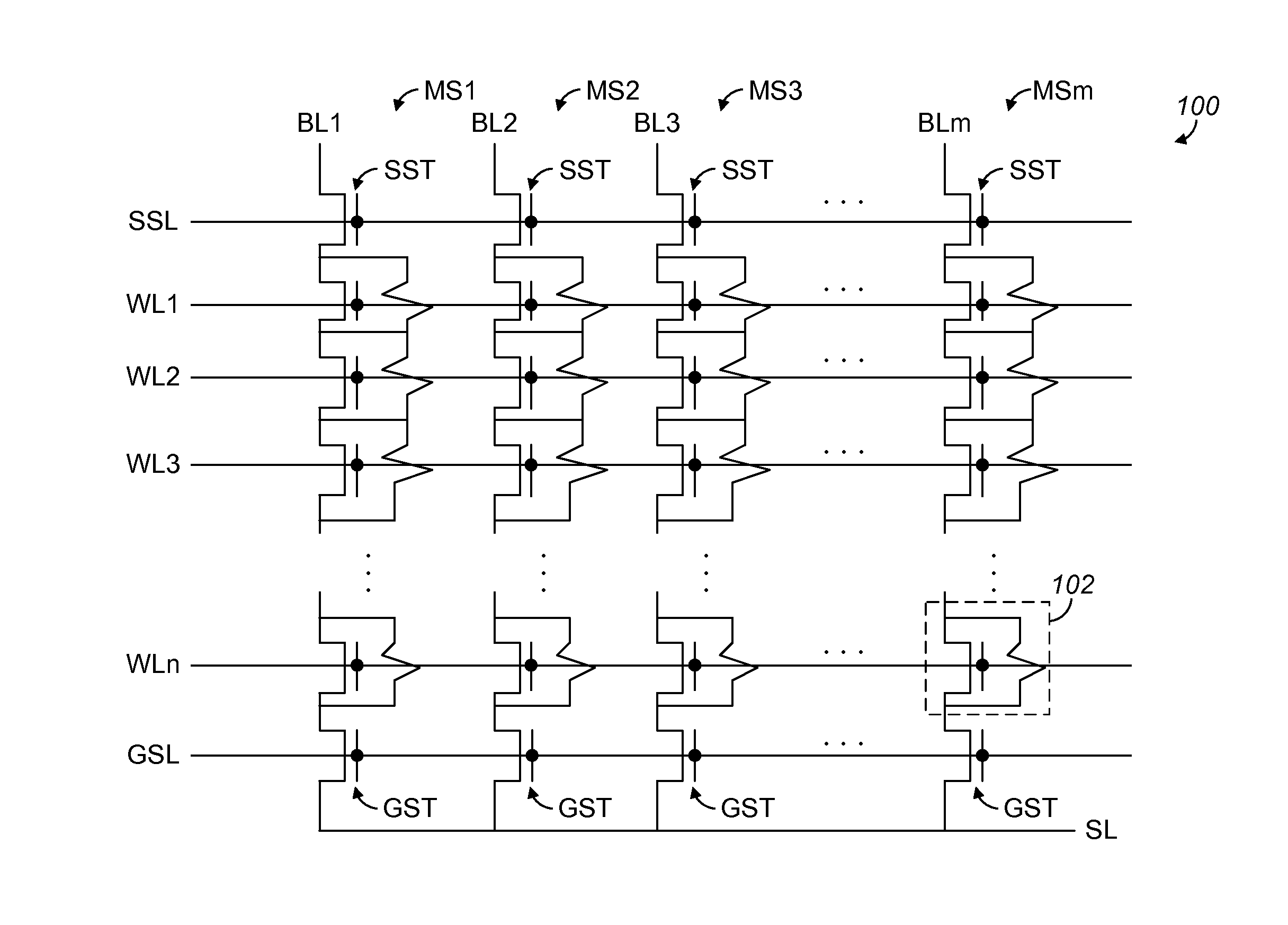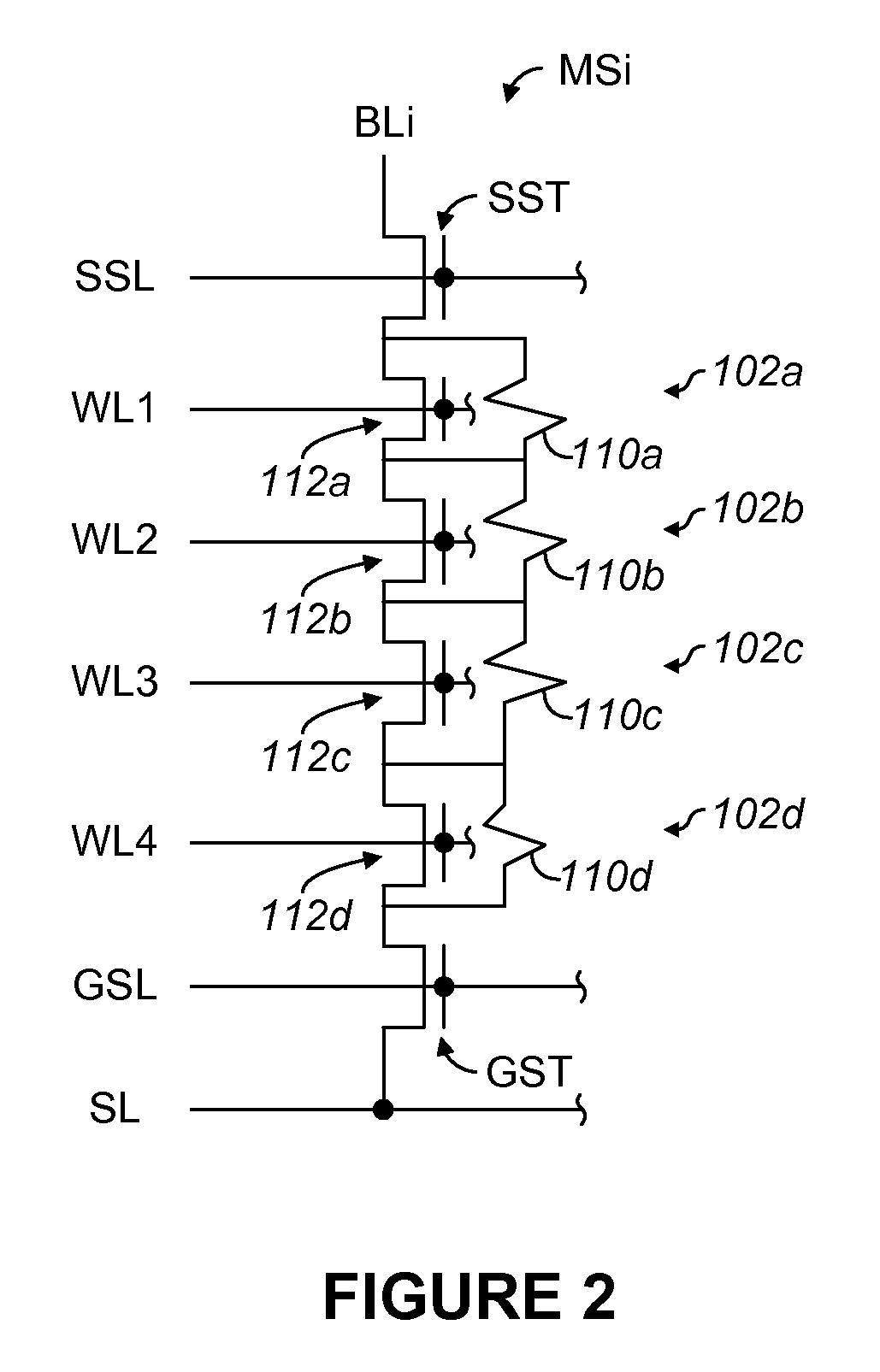Nonvolatile memory device having a transistor connected in parallel with a resistance switching device
a resistance switching device and memory device technology, applied in the field of nonvolatile memory devices, can solve the problems of increasing process costs, increasing bit costs using this approach, and insufficient capacity to simply increase capacity
- Summary
- Abstract
- Description
- Claims
- Application Information
AI Technical Summary
Benefits of technology
Problems solved by technology
Method used
Image
Examples
Embodiment Construction
.”
BRIEF DESCRIPTION OF THE DRAWINGS
[0011]Features, aspects, and embodiments of the inventions are described in conjunction with the attached drawings, in which:
[0012]FIG. 1 shows a block diagram of a memory device in accordance with an embodiment of the present disclosure;
[0013]FIG. 2 shows a schematic diagram of a memory string of the memory device shown in FIG. 1;
[0014]FIG. 3 shows a schematic diagram of a memory cell of the memory device shown in FIG. 1;
[0015]FIGS. 4A and 4B show schematic views of a resistance switching device according to some embodiments of the resistance switching device shown in FIG. 3; and
[0016]FIGS. 5A-5E show resistance switching characteristics of a symmetrical two-state embodiment of the resistance switching device shown in FIGS. 4A and 4B;
[0017]FIG. 6 shows a graphical representation of relationships between the memory states of, and applied voltages to, a symmetrical two-state embodiment of the resistance switching device shown in FIGS. 4A and 4B;
[001...
PUM
 Login to view more
Login to view more Abstract
Description
Claims
Application Information
 Login to view more
Login to view more - R&D Engineer
- R&D Manager
- IP Professional
- Industry Leading Data Capabilities
- Powerful AI technology
- Patent DNA Extraction
Browse by: Latest US Patents, China's latest patents, Technical Efficacy Thesaurus, Application Domain, Technology Topic.
© 2024 PatSnap. All rights reserved.Legal|Privacy policy|Modern Slavery Act Transparency Statement|Sitemap



